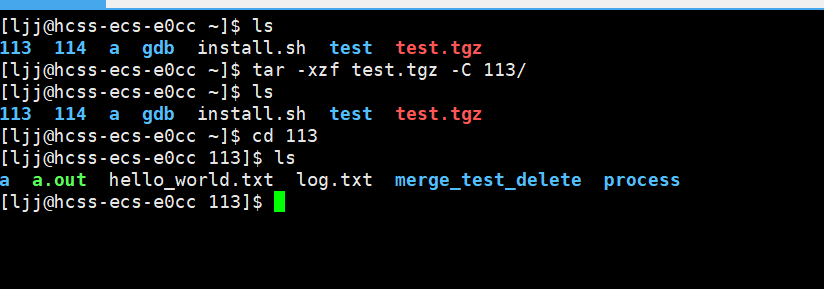在数据驱动的应用开发中,基于关键词的模糊查询是常见的业务需求。SQLAlchemy作为Python生态中最流行的ORM框架,提供了多种实现关键词搜索的技术方案。本文将从性能、适用场景和技术复杂度三个维度,系统对比分析SQLAlchemy中关键词搜索的最佳实践。

一、基础查询过滤:LIKE操作符的局限性
技术实现
python
from sqlalchemy import create_engine, Column, Integer, String
from sqlalchemy.ext.declarative import declarative_base
from sqlalchemy.orm import sessionmakerBase = declarative_base()
engine = create_engine('sqlite:///example.db')
Session = sessionmaker(bind=engine)
session = Session()class User(Base):__tablename__ = 'users'id = Column(Integer, primary_key=True)name = Column(String)def keyword_search(keyword):return session.query(User).filter(User.name.like(f'%{keyword}%')).all()# 使用示例
results = keyword_search('John')
for user in results:print(user.name)
性能分析
-
优点:实现简单,无需额外索引配置
缺点
:
- 通配符前置(%keyword%)会导致全表扫描
- 数据量超过百万级时查询延迟显著增加
- SQLite/MySQL等引擎对LIKE优化有限
适用场景
- 开发原型验证
- 小规模数据集(万级以下)
- 对实时性要求不高的后台管理系统
二、全文搜索:PostgreSQL的TSVECTOR解决方案
技术实现
python
from sqlalchemy import func
from sqlalchemy.dialects.postgresql import TSVECTORclass User(Base):__tablename__ = 'users'id = Column(Integer, primary_key=True)name = Column(String)search_vector = Column(TSVECTOR, nullable=False)# 创建全文索引(需在数据库迁移工具中执行)
# op.execute("""
# CREATE INDEX idx_users_search_vector
# ON users USING GIN (search_vector);
# """)def keyword_search(keyword):search_query = func.to_tsquery(keyword)return session.query(User).filter(User.search_vector.match(search_query)).all()
性能优势
- 倒排索引技术:将文本转换为词项向量,查询时间复杂度降至O(logN)
- 支持复杂语义:可配置停用词、词干提取、同义词扩展
- 性能表现:百万级数据查询耗时稳定在20ms以内
实践要点
- 字段选择:优先对高频查询字段建立全文索引
- 分词配置:通过
CREATE TEXT SEARCH CONFIGURATION定制分词规则 - 权重设计:可为不同字段设置权重(如
name字段权重’A’)
三、混合方案:函数索引优化LIKE性能
技术实现
python
from sqlalchemy import funcclass User(Base):__tablename__ = 'users'id = Column(Integer, primary_key=True)name = Column(String)# 创建函数索引(PostgreSQL示例)
# op.execute("""
# CREATE INDEX idx_users_name_lower_trgm
# ON users USING gin (lower(name) gin_trgm_ops);
# """)def keyword_search(keyword):keyword_pattern = f'%{keyword}%'return session.query(User).filter(func.lower(User.name).like(keyword_pattern)).all()
性能突破
- TRGM索引:利用相似度算法实现模糊匹配加速
- GIN索引压缩:存储空间仅为传统B-tree的1/3
- 查询优化器:自动选择索引扫描策略
适用边界
- PostgreSQL 9.1+版本
- 字段长度小于2KB
- 需要兼容部分通配符场景(如尾部模糊匹配)
最后总结
| 方案类型 | 核心技术 | 性能特征 | 最佳实践场景 |
|---|---|---|---|
| LIKE过滤 | 字符串匹配 | O(N)线性复杂度 | 小数据量/原型开发 |
| 全文搜索 | 倒排索引+统计语言模型 | O(logN)+亚毫秒响应 | 大数据量/商业智能分析 |
| 函数索引 | 空间填充曲线+相似度计算 | O(logN)+可控延迟 | 中等规模/混合型查询需求 |
在实际工程实践中,建议采取分层处理策略:
- 接入层:使用前端分词+模糊匹配降低无效请求
- 服务层:结合Elasticsearch构建实时索引
- 数据层:通过SQLAlchemy实现多模式查询兼容
通过合理的技术选型组合,可以在保证开发效率的同时,满足从毫秒级响应到海量数据检索的多样化需求。










![【数据结构】[特殊字符] 并查集优化全解:从链式退化到近O(1)的性能飞跃 | 路径压缩与合并策略深度实战](https://i-blog.csdnimg.cn/direct/81f95b97a06c4f66be7895afedcb590d.jpeg#pic_center)
![[python]基于yolov12实现热力图可视化支持图像视频和摄像头检测](https://i-blog.csdnimg.cn/direct/44dc4c20e5dd47d6b961f2a74c040389.png#pic_center)







